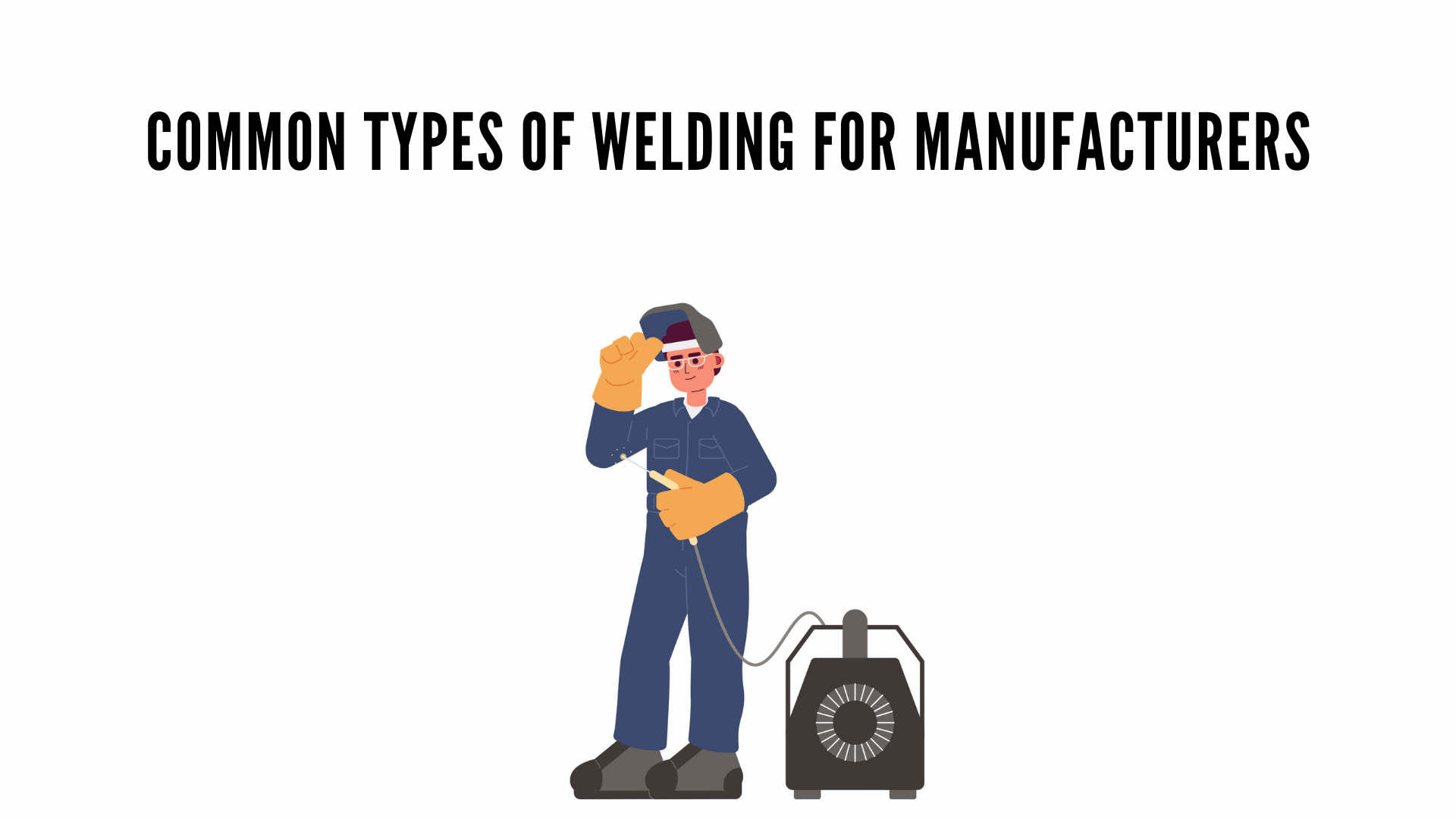Welding is a critical process in manufacturing, enabling the joining of metals to create structures, machinery, and products across various industries. From towering skyscrapers to intricate electronic devices, welding is the backbone that holds our modern world together. There are numerous welding techniques, each suited to different applications and materials. Here, we’ll explore the most common types of welding used in manufacturing, discussing their processes, advantages, and typical applications.
1. Shielded Metal Arc Welding (SMAW)
Process:
Shielded Metal Arc Welding, commonly known as stick welding, involves using a consumable electrode coated in flux. The electrode is connected to a power source that creates an electric arc between the electrode and the workpiece, melting both to form a weld pool. The flux coating on the electrode disintegrates during welding, producing a shielding gas and slag that protect the weld from atmospheric contamination.
Advantages:
- Versatility: Can be used on various metals and thicknesses.
- Portability: Equipment is relatively simple and easy to transport.
- Cost-Effective: Low initial investment in equipment.
Applications:
- Construction and structural work
- Repair and maintenance
- Heavy steel fabrication
2. Gas Metal Arc Welding (GMAW/MIG)
Process:
Gas Metal Arc Welding (GMAW), commonly referred to as Metal Inert Gas (MIG) welding, uses a continuous wire electrode fed through a welding gun. An inert or semi-inert gas, such as argon or carbon dioxide, shields the weld pool from contamination. The constant feed of the electrode makes this process suitable for high-speed and automated welding.
Advantages:
- High Efficiency: Continuous welding reduces downtime.
- Ease of Use: Simple to learn and operate.
- Clean Welds: Minimal spatter and post-weld cleaning.
Applications:
- Automotive industry
- Production lines
- Thin metals and non-ferrous metals
3. Gas Tungsten Arc Welding (GTAW/TIG)
Process:
Gas Tungsten Arc Welding (GTAW), or Tungsten Inert Gas (TIG) welding, uses a non-consumable tungsten electrode to produce the weld. An inert gas, typically argon, shields the weld area. Filler material can be added manually or automatically. TIG welding is known for its precision and high-quality welds, making it ideal for applications requiring superior finish and strength.
Advantages:
- High-Quality Welds: Produces clean and precise welds.
- Versatile: Can weld a variety of metals, including aluminum and magnesium.
- Control: Provides excellent control over the welding process.
Applications:
- Aerospace industry
- High-performance automotive components
- Art and sculpture
4. Flux-Cored Arc Welding (FCAW)
Process:
Flux-Cored Arc Welding is similar to GMAW but uses a special tubular wire filled with flux instead of a solid wire. The flux provides shielding from contamination, allowing FCAW to be used without external shielding gas in some cases (self-shielded FCAW). It can also be used with an external shielding gas (dual-shielded FCAW).
Advantages:
- High Deposition Rate: Suitable for high-speed welding.
- Outdoor Use: Self-shielded FCAW can be used in windy conditions.
- Strong Welds: Ideal for thick materials and structural welding.
Applications:
- Shipbuilding
- Heavy equipment manufacturing
- Construction
5. Submerged Arc Welding (SAW)
Process:
Submerged Arc Welding involves feeding a continuous wire electrode under a blanket of granular flux. The arc is submerged beneath the flux, which prevents spatter and provides a high-quality weld. This process is typically used for welding thick materials and is often automated for long, continuous welds.
Advantages:
- High Efficiency: Suitable for large-scale welding operations.
- High Deposition Rates: Can achieve deep penetration and fast weld speeds.
- Minimal Fumes and Spatter: The submerged arc provides a clean welding environment.
Applications:
- Pressure vessel manufacturing
- Pipelines and large-diameter pipes
- Structural beams and columns
6. Resistance Spot Welding (RSW)
Process:
Resistance Spot Welding uses pressure and electrical current to join metal sheets at specific points. Electrodes apply pressure and pass current through the workpieces, creating localized heat that fuses the metals. This process is highly automated and is commonly used for joining sheet metals.
Advantages:
- High Speed: Fast and efficient for repetitive spot welds.
- Minimal Distortion: Localized heating reduces warping.
- Automation Friendly: Easily integrated into robotic systems.
Applications:
- Automotive body panels
- Sheet metal assemblies
- Appliance manufacturing
7. Laser Beam Welding (LBW)
Process:
Laser Beam Welding uses a focused laser beam to melt and join materials. The high-energy density of the laser allows for deep penetration and precise control. LBW is ideal for applications requiring high precision and minimal heat input.
Advantages:
- Precision: Extremely accurate with minimal distortion.
- Speed: Fast welding process suitable for automation.
- Versatility: Can weld a wide range of materials and thicknesses.
Applications:
- Electronics and micro-welding
- Medical devices
- High-speed production lines
8. Electron Beam Welding (EBW)
Process:
Electron Beam Welding uses a beam of high-velocity electrons directed at the workpiece. The kinetic energy of the electrons is converted into heat upon impact, creating a deep and narrow weld. EBW is performed in a vacuum to prevent electron scattering and is used for high-precision and high-strength welds.
Advantages:
- Deep Penetration: Capable of welding very thick materials.
- High Precision: Produces clean and narrow welds.
- Minimal Distortion: Low heat input reduces thermal distortion.
Applications:
- Aerospace and defense
- Nuclear reactor components
- Precision instruments
Conclusion
Choosing the right welding technique is crucial for manufacturing processes, as each method has its specific advantages and applications. From the simplicity of stick welding to the precision of laser and electron beam welding, manufacturers have a diverse toolkit to meet their welding needs. Understanding these methods helps manufacturers select the most efficient and cost-effective process for their specific applications, ensuring high-quality and reliable welds.
By staying informed about the latest advancements and best practices in welding, manufacturers can optimize their production processes, improve product quality, and maintain a competitive edge in their industry.
If you enjoyed this overview of common welding types, consider subscribing to our blog for more insights into manufacturing technologies and processes.
4o









